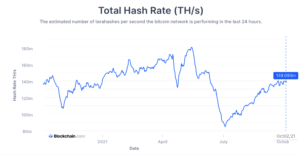
Every day it seems like technology gets a little bit slicker. Interfaces are streamlined, graphics are boosted, functionalities are enhanced, and new integrations are created so that all of your technology and devices can play nice and function together.
The same is true in the ecommerce world. (We haven’t just been sitting on our hands once we release a product!) You’ve no doubt noticed that some of your favorite retailers’ and merchants’ websites have changed and improved over time as technology has become more sophisticated.
In a broad sense, for ecommerce, this is because we’ve been able to break apart the systems and technologies that make online shopping possible — from websites and servers to software and graphical interfaces. Rather than function like a single chain in which all of the links are required for the chain to work, we’ve been able to pull out individual links and use them in kind of a plug and play method to suit what we’re trying to do. And that’s led to things like headless software, headless ecommerce and application programming interfaces (or APIs).
What does all that babbling mean? Let’s start by discussing headless software and we’ll go from there.
What do we mean by headless software?
Technically speaking, when we talk about headless software, we’re talking about software (e.g., computer programs, smartphone apps, etc.) that can function on a device without a graphical user interface.
Wait, what’s a graphical user interface? Good question, and thanks for paying attention. A graphical user interface is what lets us interact with software using visual cues and indicators. Basically, it’s how the software is visually presented to the user.
Think of a smartphone you’ve used or seen. When you unlock the phone and go to its home screen with all of its apps, you’re looking at that device’s graphical user interface. That interface allows you to browse, tap and use specific apps and software by displaying the information visually so you can see what you’re selecting.
Now, back to headless software. Without a visual interface, you might be wondering how the software works. Making software headless separates the front end — the visual parts of the software a user will interact with — from the back end — the part of the software that you can’t see that makes it interactive and usable. Essentially, making software headless keeps all of its functions but removes the software’s
You might be wondering — why would we do this? Wouldn’t this limit how the software can be used and shrink the amount of other software and systems that our software can interact with?
This is where APIs come in.
What is an API?
Without getting too far into the technical details, at its core, an API is just a connection.
It could be a connection between computers, computer programs, pieces of software, operating systems, hardware and more. These days, though, APIs are typically used to enable computers and software to talk to one another via the internet. For example, you can check out some of the things developers can do with the Ecwid API Platform here.
Remember the graphical user interface we talked about above? It’s the visual presentation of a device or piece of software that allows it to connect with a person. In contrast, APIs allow computers and software and other bits of technology to connect to one another.
Think of the last time you tried to print something before everything and everyone was connected to the internet. You’d have to make sure you had that little cable that physically connected the computer to the printer so that the two could communicate and the computer could send the correct document to the printer. In a coarse nutshell, that’s what an API is
OK, so now that we know a little bit about how and why APIs work, what do they mean for headless ecommerce?
What is headless ecommerce? And why do we want it?
With all of this background in mind, let’s turn our focus to headless ecommerce. Many online ecommerce platforms (Ecwid included) are offered as software as a service (or SaaS) in which companies and users pay a subscription to access the software, which is centrally hosted outside of the user’s computer or network and can be accessed on demand.
And as with other pieces of software and technology, we have the ability to make ecommerce software headless — that is, separate its visual interface from the backend architecture and construction that gives it its functionality. What that leaves us with is all of the core functions and components of the ecommerce software that makes it work without being tied to a specific user interface, visual representation, or certain company brand.
You might wonder, What’s the point? Well, with this ability to use the functions of a software (like ecommerce) without being tied to a specific interface, there is much more freedom for developers, partners, stakeholders and other companies to offer these services without having to create their own ecommerce software from scratch.
Headless ecommerce also allows other businesses to offer ecommerce services the way they want — with their designs, their interface, and their user experience — and enables true
Imagine shopping online and getting to use all of the functionality and features of Amazon’s online shopping experience without being tied to Amazon’s specific site or app interface, and instead being able to tweak elements of those things so that they’re friendlier to how you like to shop. That, at its heart, is headless ecommerce.
We hope this gives you a bit more background on headless ecommerce and some insight into the potential applications of headless software. What headless software do you know and like to use? Let us know in the comments!
Source: https://www.ecwid.com/blog/what-is-headless-ecommerce.html
- access
- All
- api
- APIs
- app
- Application
- applications
- apps
- architecture
- Bit
- Boosted
- businesses
- Companies
- company
- computers
- construction
- day
- Demand
- developers
- Devices
- ecommerce
- etc
- experience
- Features
- Focus
- Freedom
- function
- good
- Hardware
- Home
- How
- HTTPS
- information
- integrations
- interactive
- Internet
- IT
- Led
- Making
- network
- offer
- online
- online shopping
- operating
- operating systems
- Other
- partners
- Pay
- platform
- Platforms
- Programming
- Programs
- SaaS
- Screen
- sense
- Services
- Shopping
- smartphone
- Software
- start
- subscription
- Systems
- talking
- Tap
- Technical
- Technologies
- Technology
- time
- users
- websites
- What is
- Work
- works
- world





